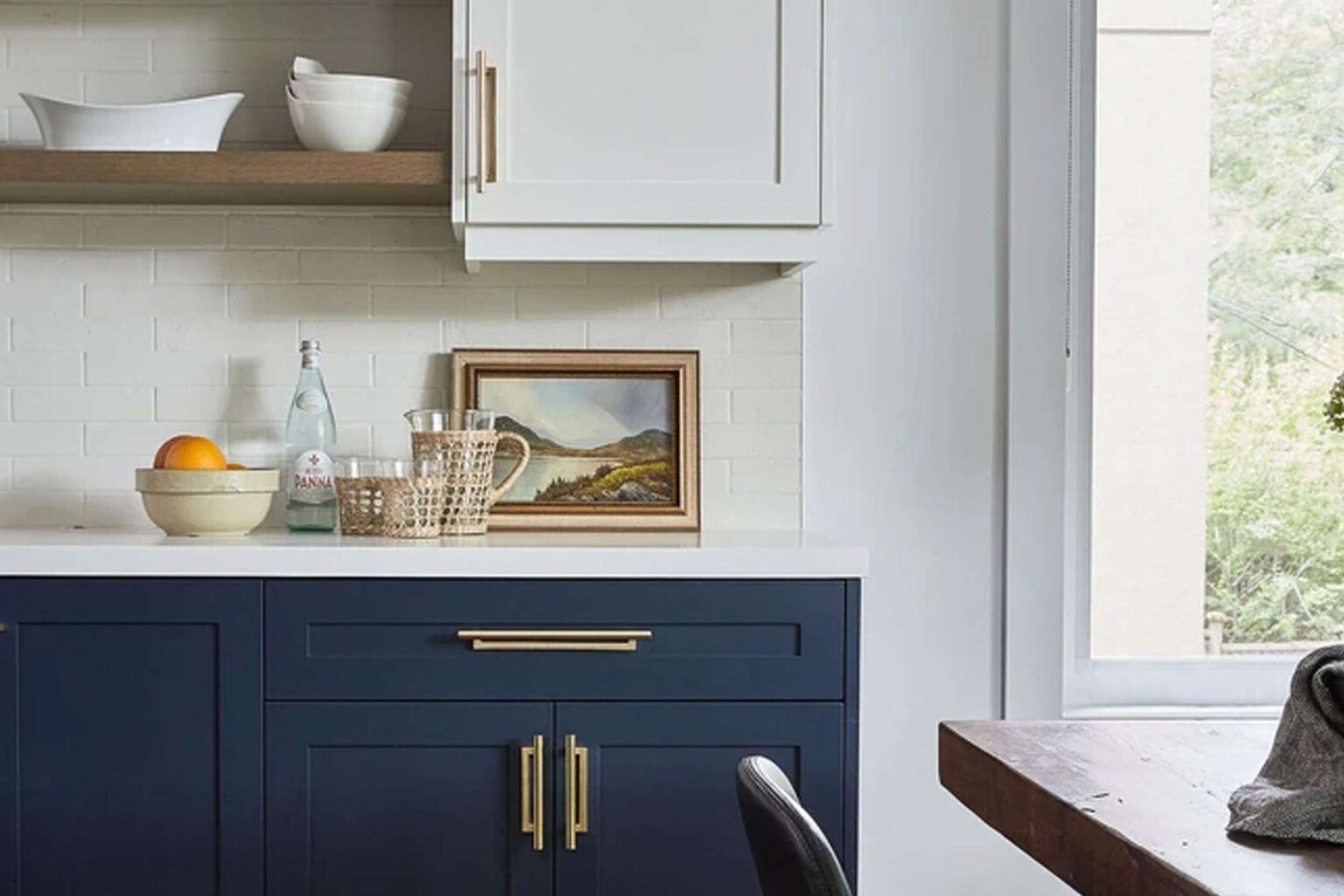Act as an expert content writer specialized in Interior Walls and Ceilings design, who speaks and writes fluently in French. Translate the article below into French. Continue writing until you finish translating the entire content from beginning to the end. Make sure the translation is linguistically accurate, and conveying the meaning, facts and figures of the original text. Make sure the content generated is well written and does not sound like a translation and reflects an awareness of the culture of French people. Don’t talk about Yourself or Your Experience. Don’t Self-reference. Don’t explain what you are doing. Write the content in HTML format and Keep the images and the structure of the article as they originally are. The article to translate:
You’ve found the perfect tile, mosaic, or panel for your kitchen or bath backsplash, but are contemplating whether you need to clad the full wall without it looking odd or like a mess.
If there’s no real perimeter to define where the backsplash begins and ends, vertically or horizontally, consider one of these pointers, which are well suited to various layouts and configurations. They range from easy and quick DIY projects to applications that are a bit more hands-on or advanced.
Below, we’re sharing 12 clever methods on how to end backsplash on an open wall.
-
01
of 12Make Ends Meet
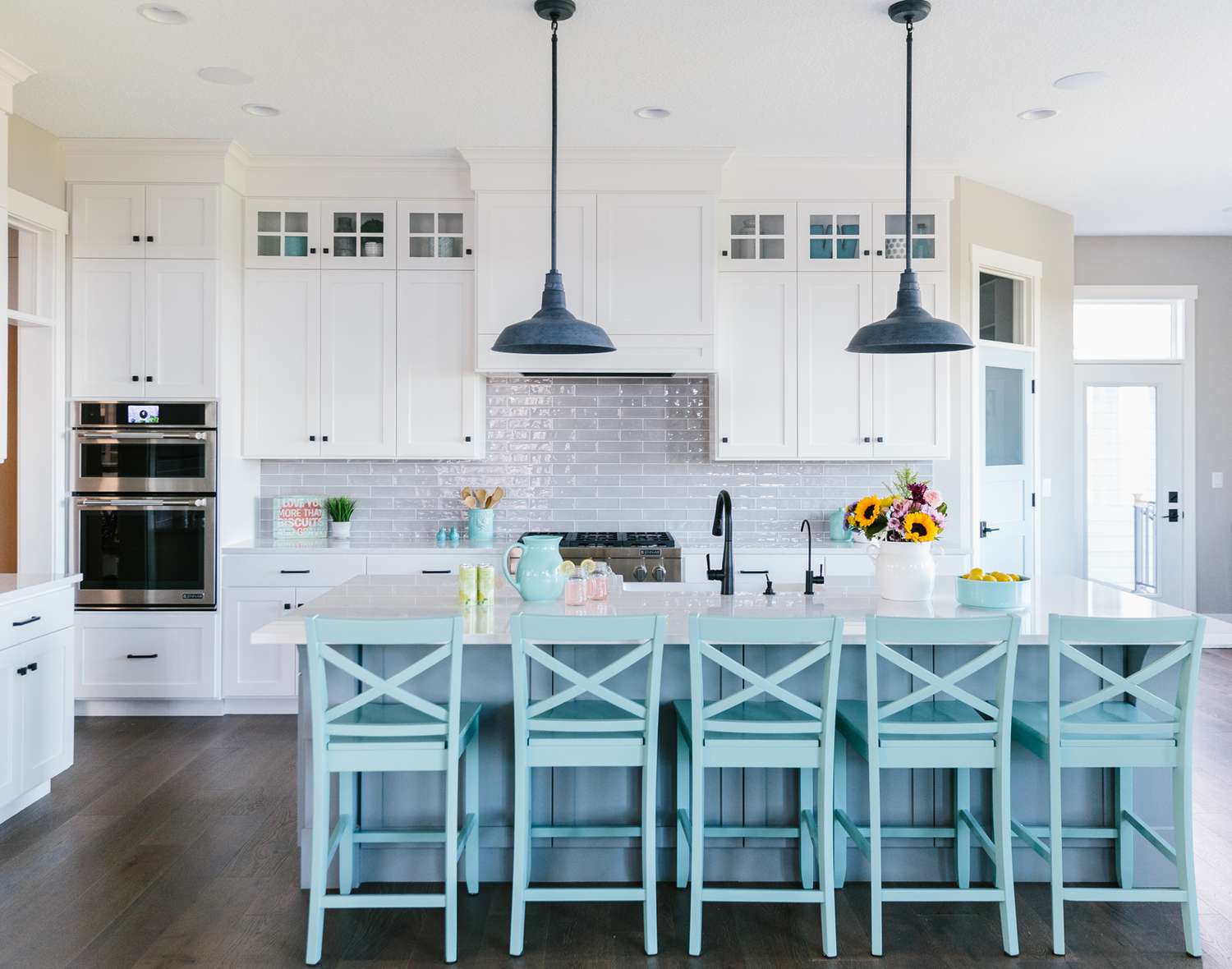
Interior Impressions / Photo by Mackenzie Merrill Photography
One of the best ways to end a backsplash is to align the tiles at the top to form a clean edge at a natural stopping point, such as wall cabinetry, a soffit, or the base of a windowsill.
With cabinetry, you can simply end the tiling just underneath the casework. Since the cabinets will conceal the very top and prevent one from rubbing up against its sharp edge, there’s no need to use bullnose edging or trims.
You can also align the sides with cabinetry rather than cover the full width of the wall. But you may have to use trim if the exposed edges are too sharp.
-
02
of 12Taper Off the Tile
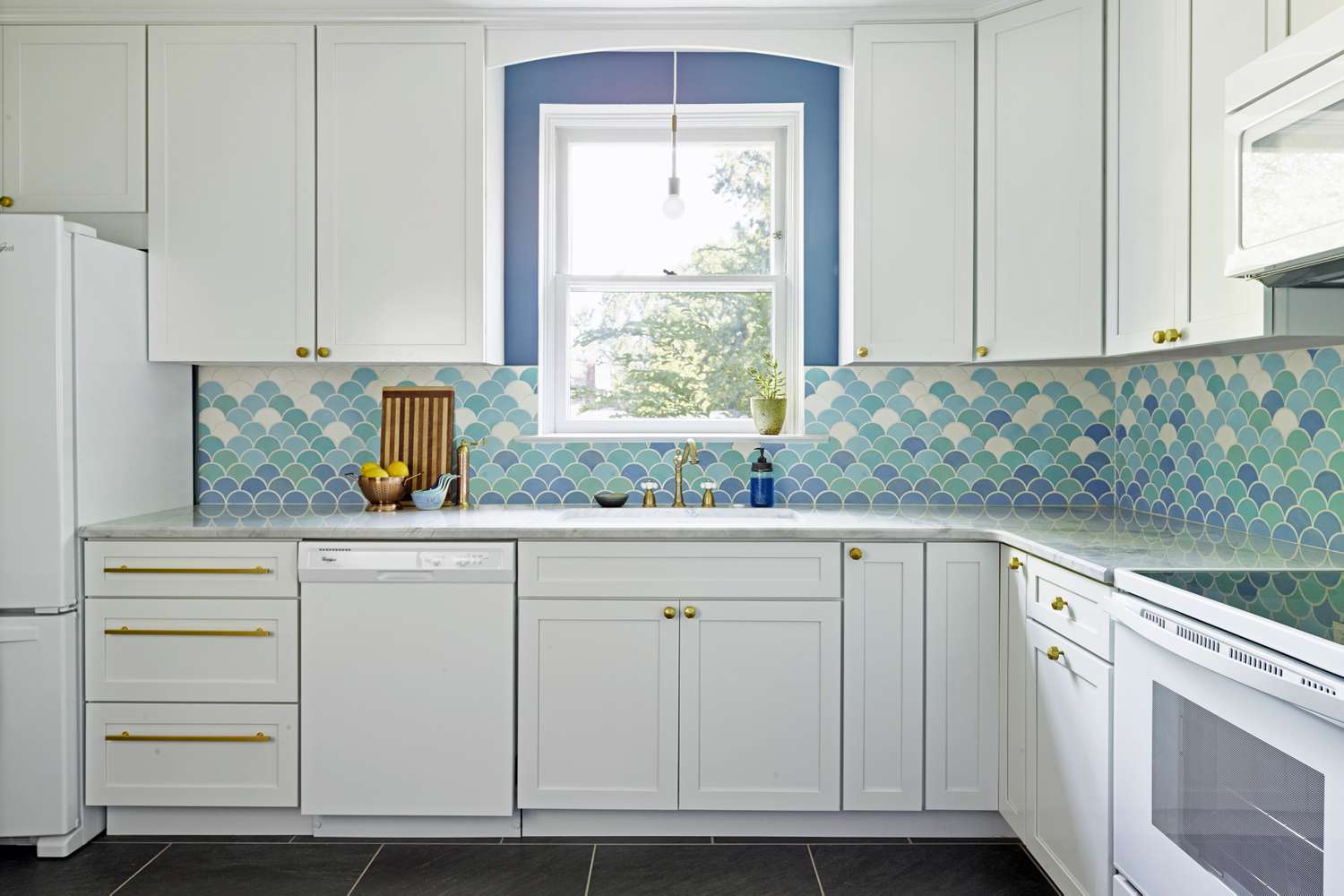
If you feel ambitious and creative, consider tapering off the backsplash at the top. For instance, you can stagger the tiles toward the top, and then reduce the number of tiles to transition the backsplash onto the plain wall.
-
03
of 12Define an Area

Consider defining a specific area with a framed section of tiling. You can even cover the entire wall in tile and then change the tile you use within the frame.
The frame itself can be composed of a picture railing, chair railing, or trim tile. You’ll often see this option used in kitchens above a cooktop.
-
04
of 12Take the Edge Off
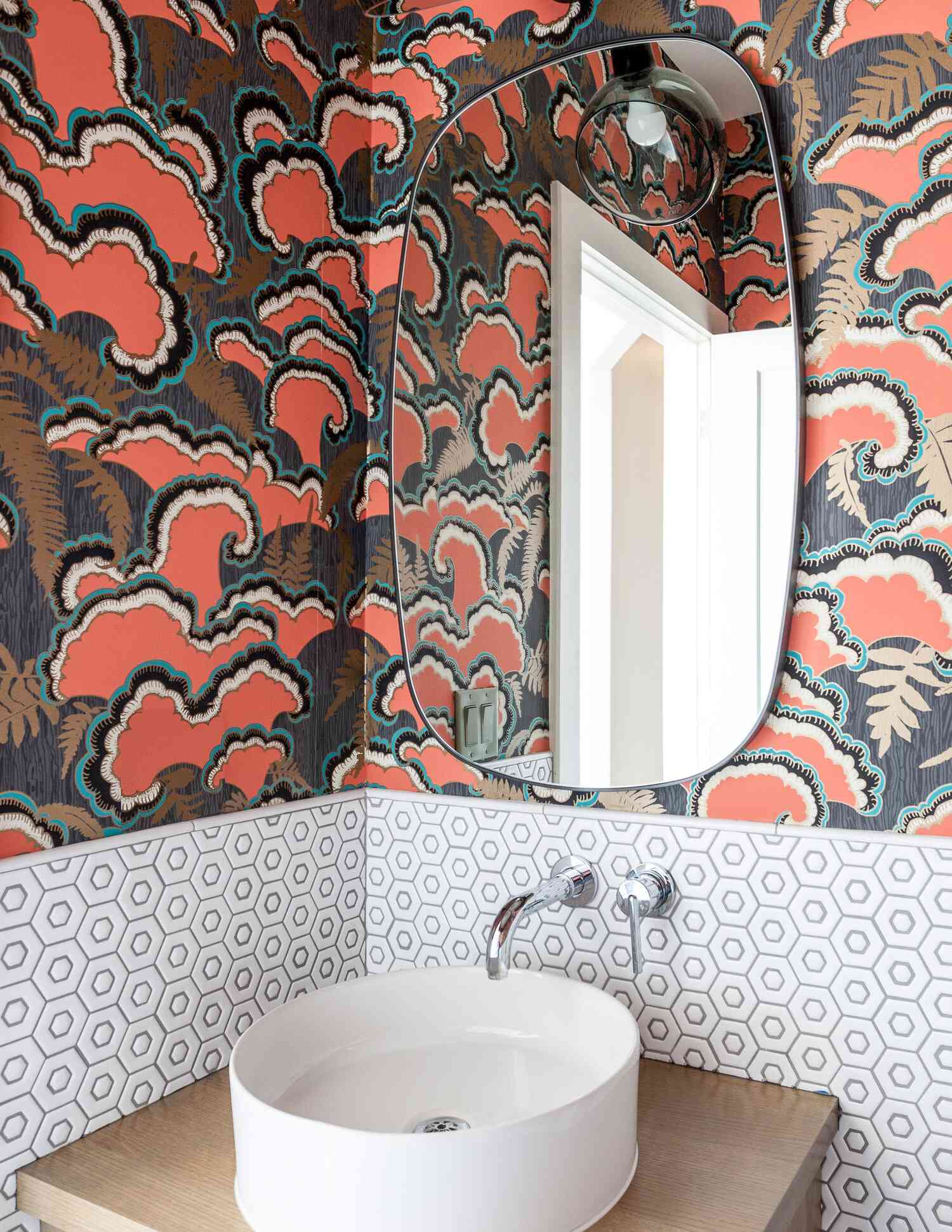
Many tile collections include a bullnose trim tile that is in the same material, color, and finish as the main tile, but with one or more rounded edges. These can be the same dimensions as the main tile or extended and shortened to a stick-like module.
If the tile you select doesn’t include a coordinating trim, look for similar tile lines from different brands. You can likely find a close substitute (assuming you choose a popular stone, ceramic, or glass tile).
Bullnose trim tile with more than one rounded edge is likely to serve as both a top and side trim, which is useful for situations such as continuing the backsplash right up to or around a corner.
-
05
of 12Trim It
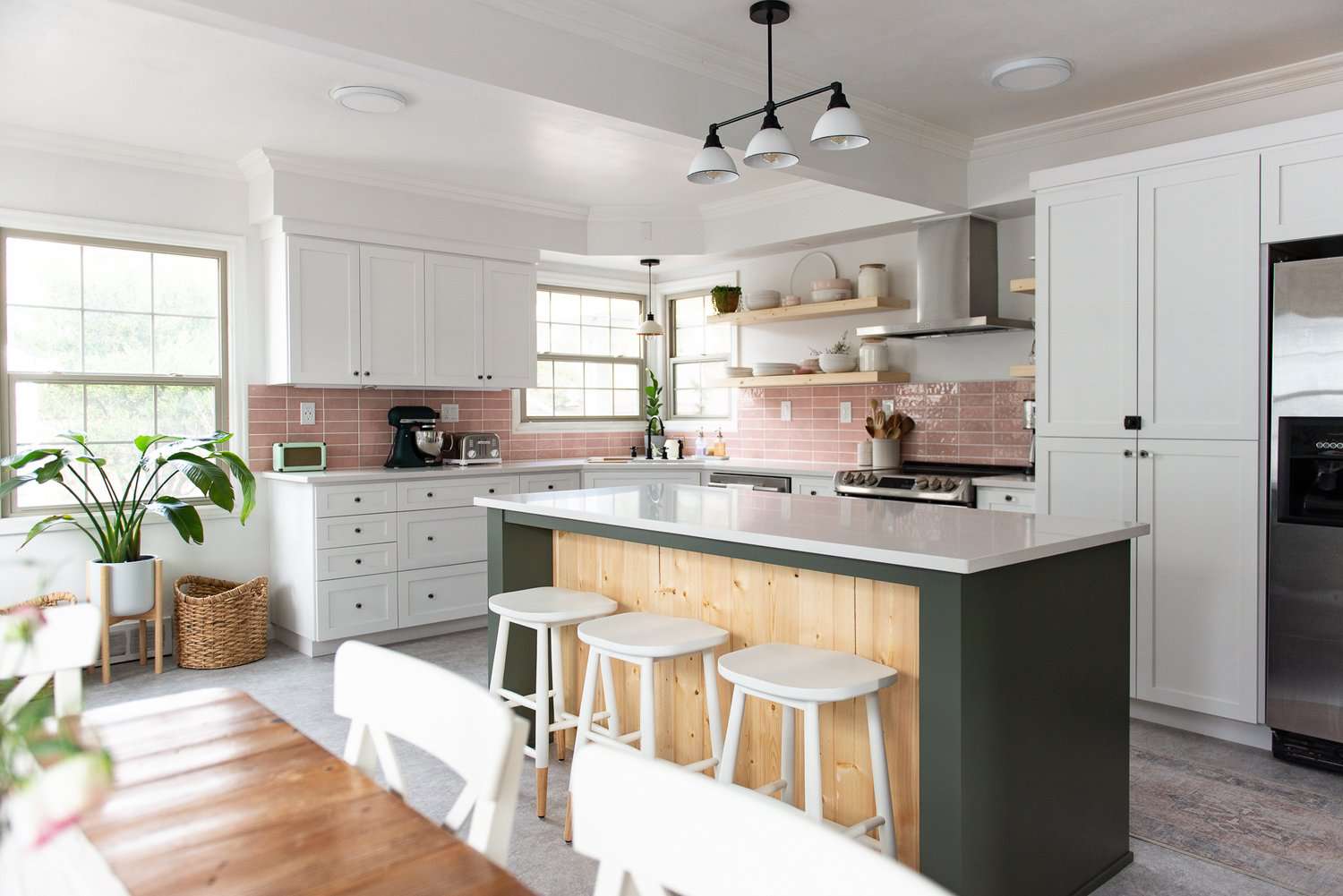
You might have spotted a subtle band delineating the backsplash whether in a home or commercial setting.
Specifically developed to create a border that softens or covers the tile edges for a smoother transition, trim comes in aluminum, steel, or PVC among other materials, in different profiles. They range from rounded (similar to bullnose trim) and angled to L-shaped.
They’re also offered in a variety of finishes to meet different stylistic and budgetary needs, from bronze powder-coated aluminum to simple white PVC.
-
06
of 12Choose Sides
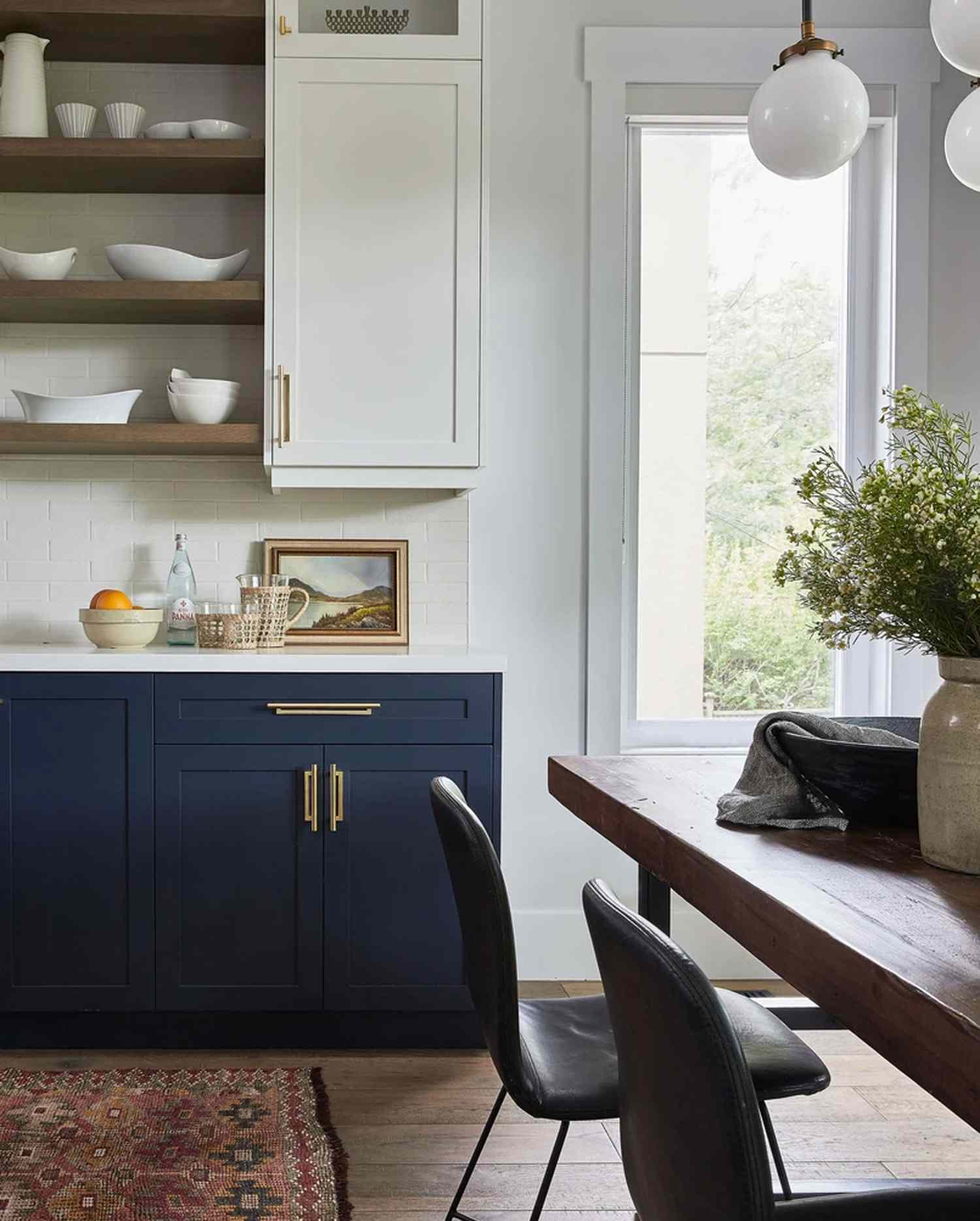
Consider cladding the wall in tile or panel from the countertop or floor all the way up to the ceiling but delineate the backsplash on the sides. You can use trim to end the side edges or align the backsplash sides with cabinetry.
-
07
of 12Set Boundaries
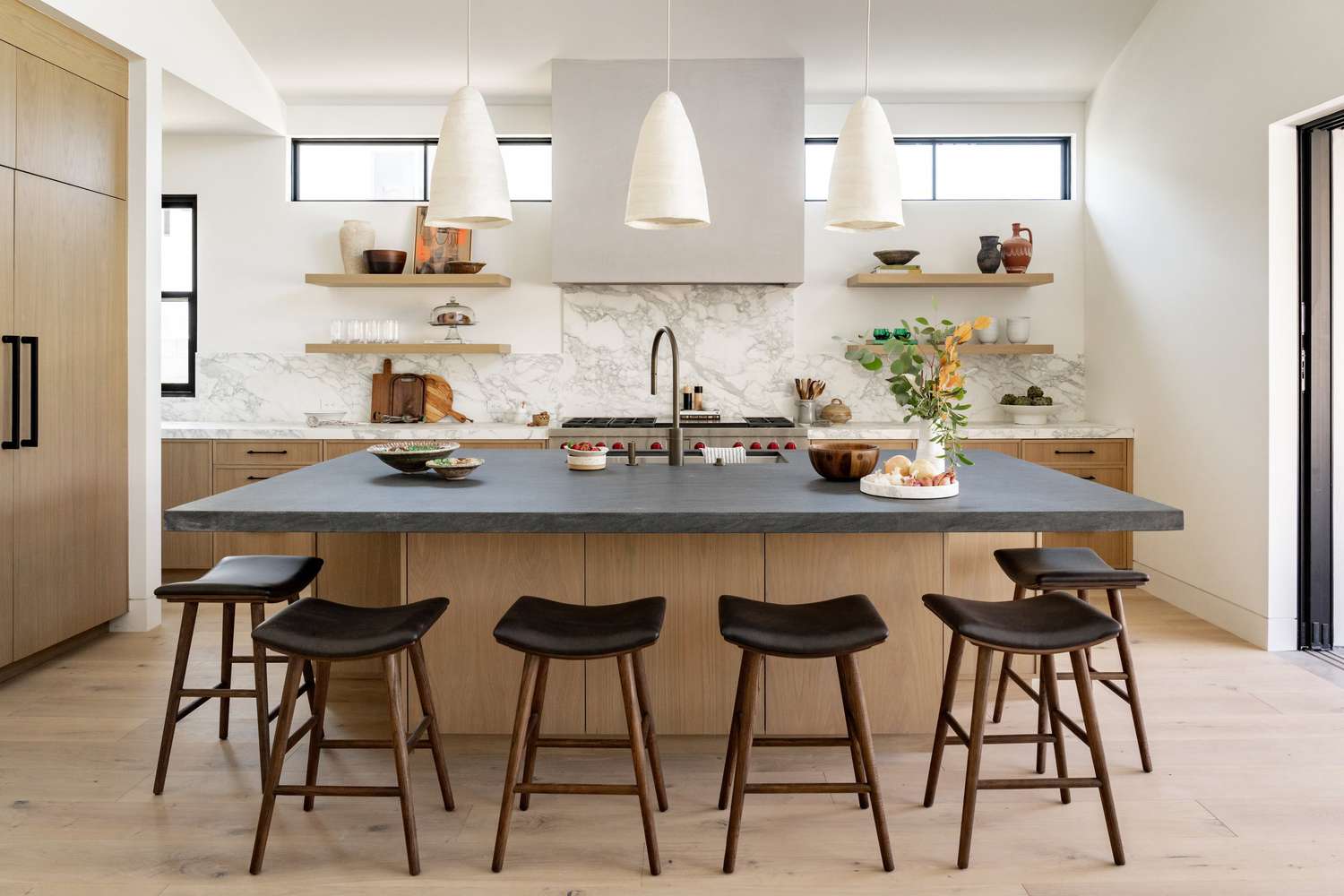
Use trim or a contrasting tile to fashion your own defined border for the backsplash. This frees you up to create taller or shorter swaths as desired.
For example, you can tile up higher on the wall behind a cooktop or sink but lower it in other sections. If you want a cleaner look and visual continuity, use strips and slabs of the kitchen or vanity countertop material instead of tiles.
-
08
of 12Step on the Ledge
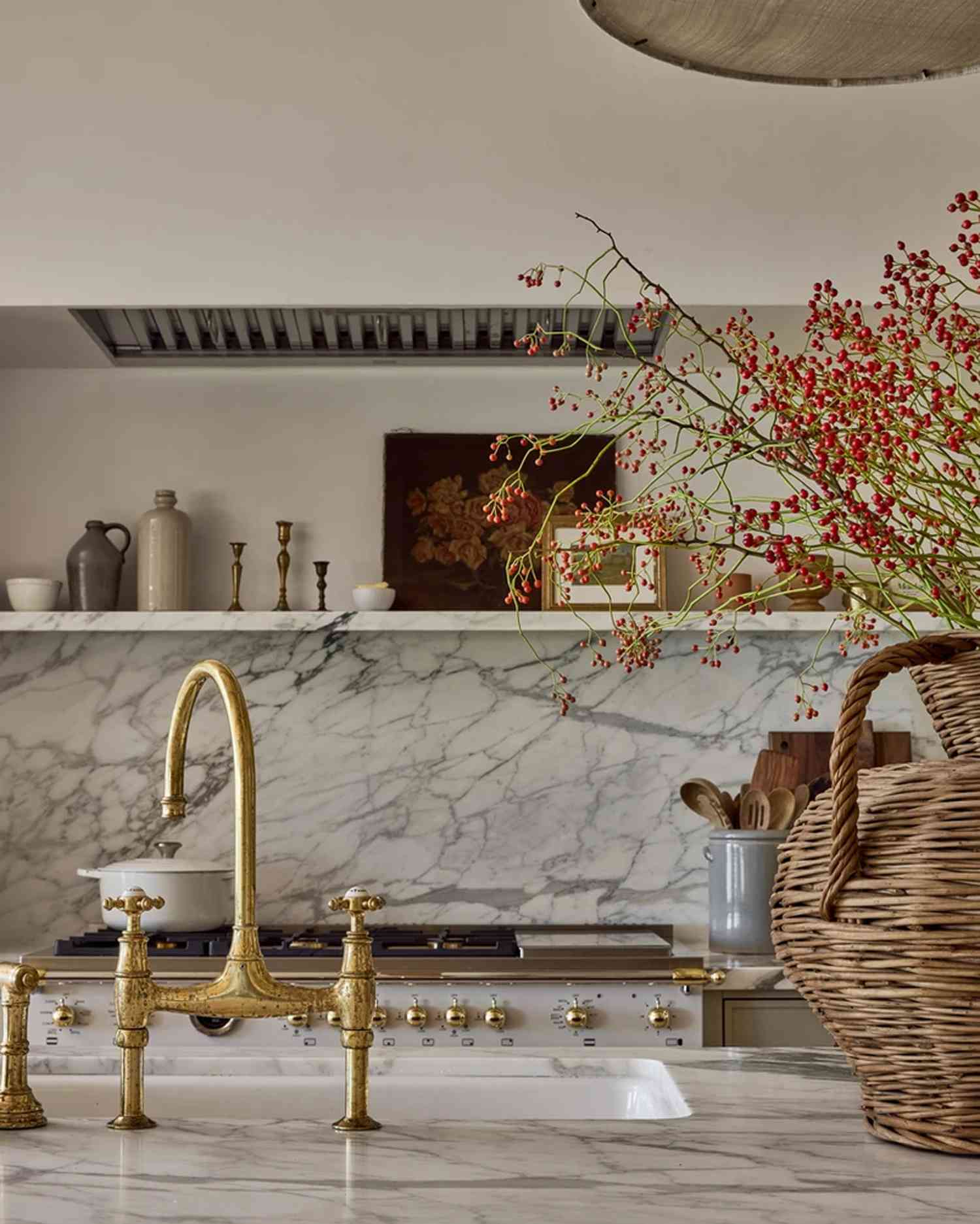
If you’re extending a countertop material onto the wall, instead of abruptly ending with the edge of the slab or panel, think about using a strip of the same material to create a slim ledge on top of the backsplash.
Not only will it create a natural-looking stopping point, but it will also serve as a mini-shelf that can accommodate spice jars, dish soap, or decorative accents.
-
09
of 12Add a Shelf
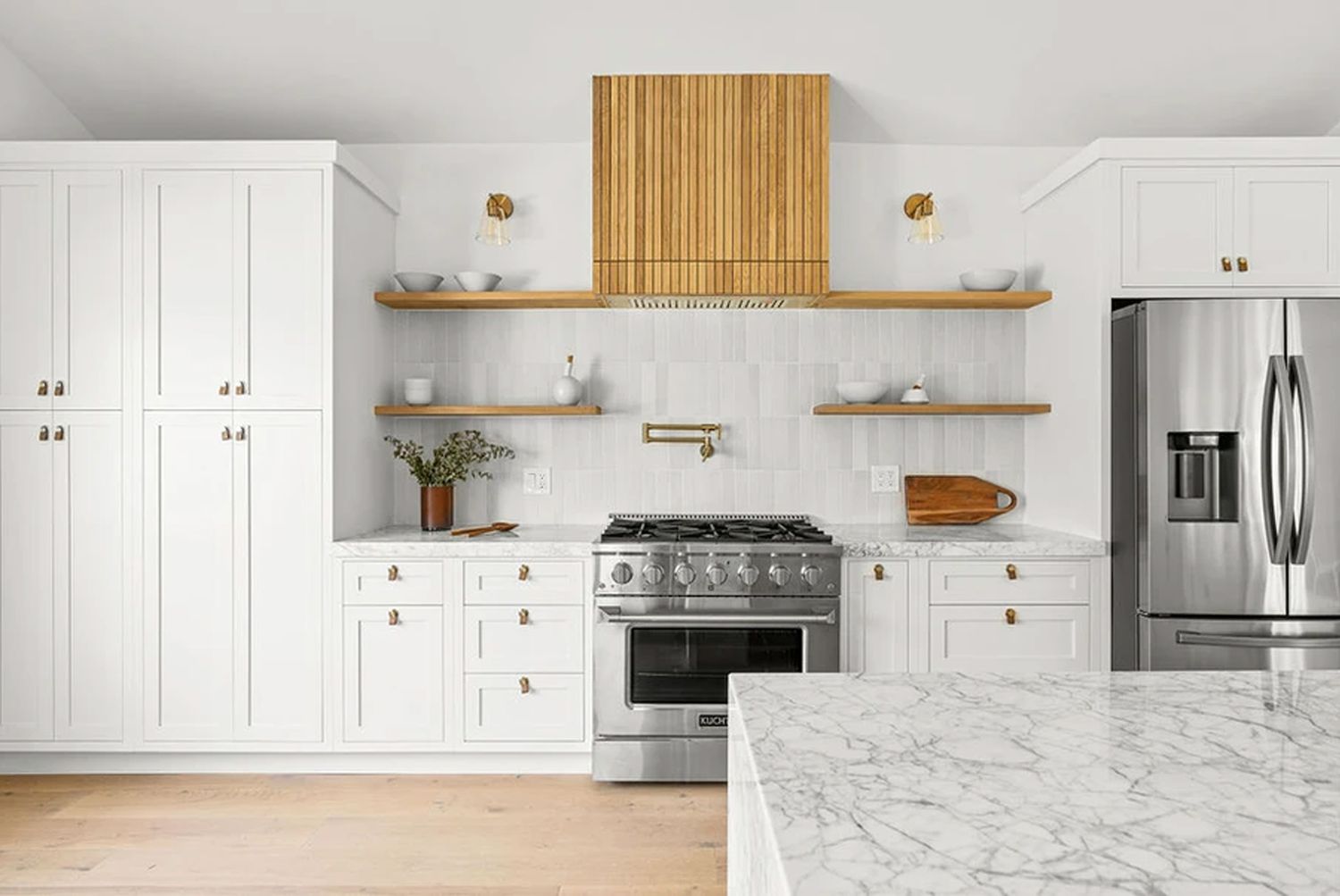
A simple way to delineate and end a backsplash is by adding your own floating wall shelves. This method is particularly useful on walls where there’s a lack of natural stopping points such as a window or cabinetry. It will also add more storage space, so you can decorate it or use it for spices.
-
10
of 12Get Onboard
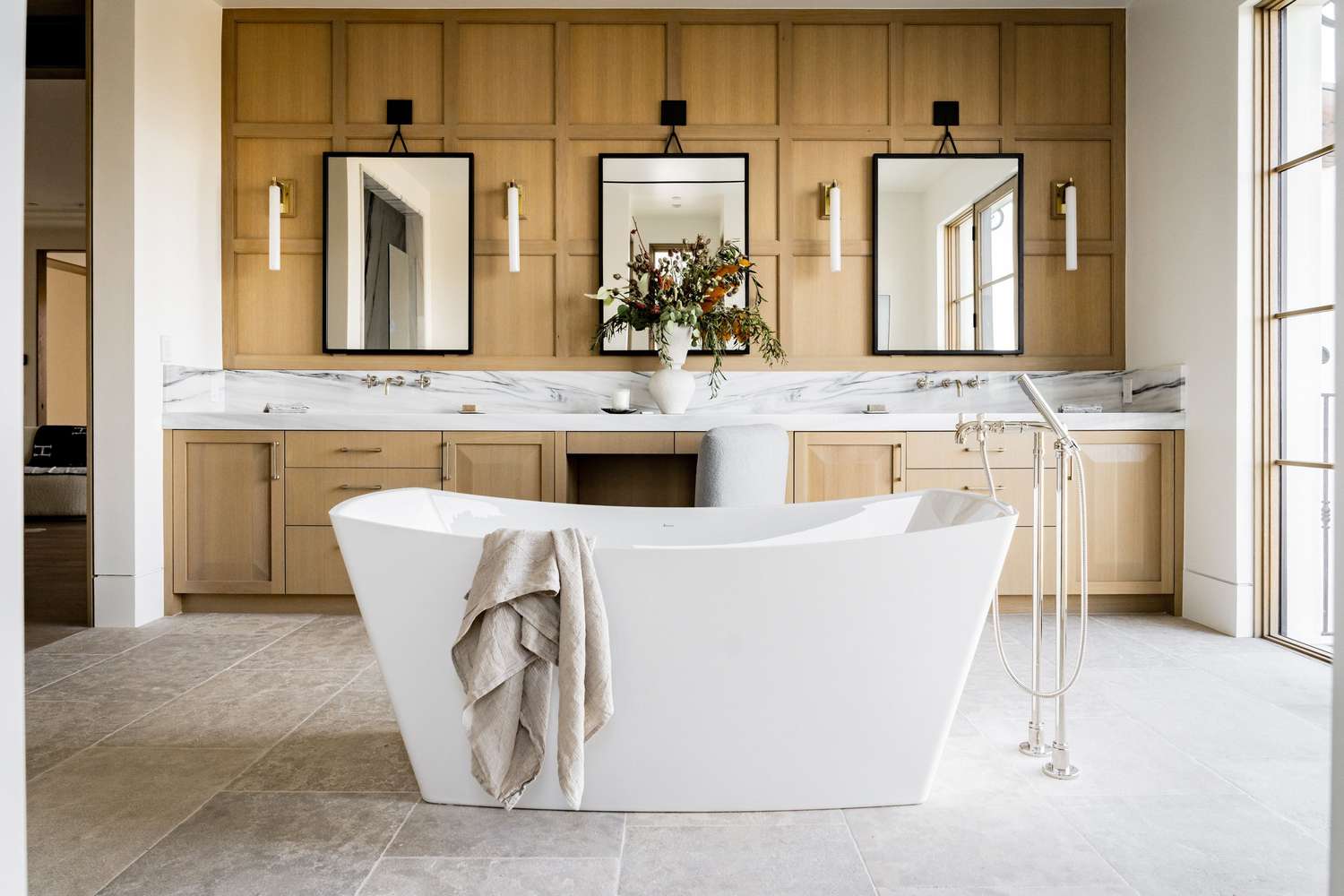
Whether it’s a kitchen or bath backsplash, you can add a touch of class while also introducing depth through wainscotting above or below the backsplash.
The paneling will especially look bespoke if it closely mimics the space’s other millwork. If you’re looking to achieve more of a farmhouse or cape cod aesthetic, use beadboard instead.
-
11
of 12Reflect on It
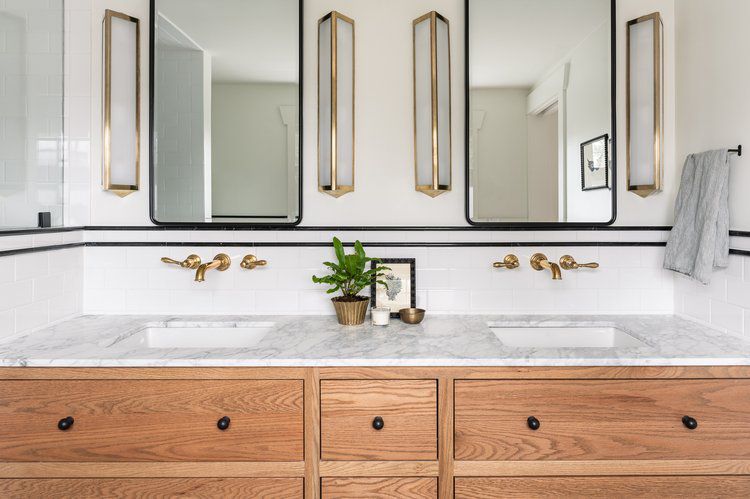
Jessica Nelson / Photo by Carina Skrobecki Photography
Bathroom settings in particular tend to look sleek when tiled from floor to ceiling. But if you don’t have the means or desire to clad the entire wall, think about creating a stop with a large wall mirror.
A wall mirror not only looks natural in a bath space, but it’s also a necessary element (in most cases) you’re going to have to implement anyhow. You can choose to tile beyond it, but you can also end the backsplash just under the mirror without it looking so DIY or janky.
-
12
of 12Caulk It
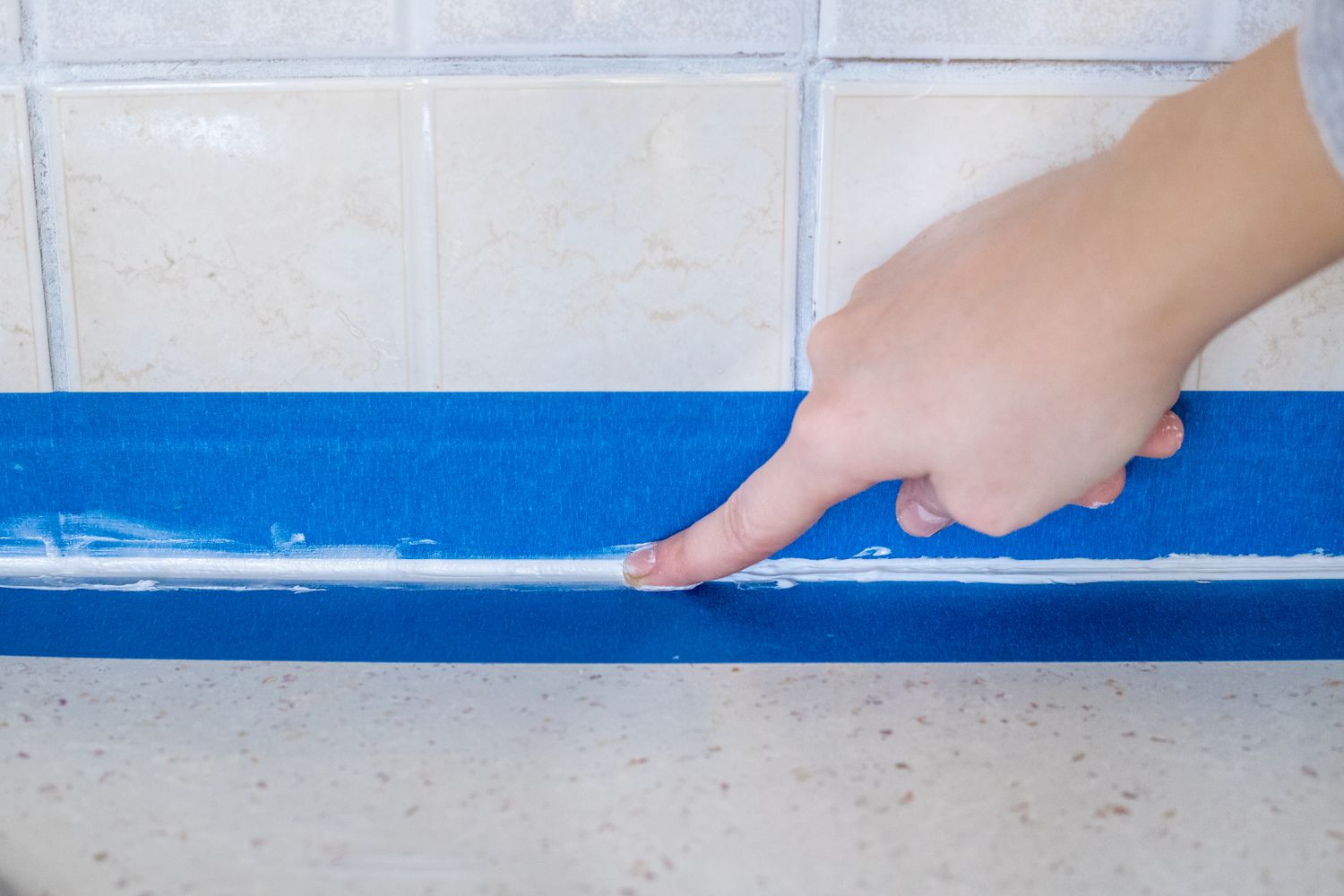
The Spruce / Sanja Kostic
By far, the most affordable—and easiest—way to end a backsplash is simply by caulking. But don’t do this freehanded as it may lead to a less-than-perfect mess.
Apply painter’s tape along the top of the backsplash directly on the tile and a smidgeon above the top edge to delineate the area to caulk. Then simply apply the caulk between the lines of tape, and use a covered finger, cloth, or a caulk-specific tool to smooth out and flatten the line before removing the tape




